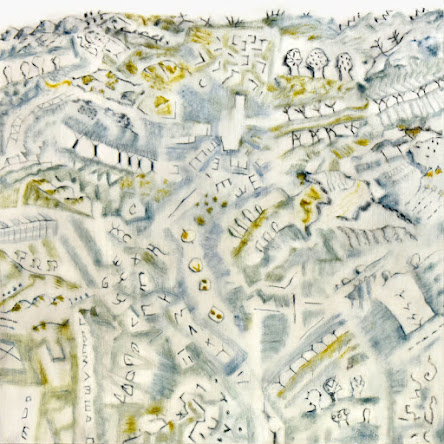GEOframe Summer School 2022
On site and Online - June13 - June 17, 2022
Online - Installations May 16 - May 18, 2022
Scientific Committee and Leading Institutions: Prof. Riccardo Rigon, Ph.D.; Prof. Giuseppe Formetta, Ph.D; Ing. Niccolò Tubini Ph.D., Ing. Concetta D’Amato, Ing. Marialaura Bancheri, Ph.D.
Partners:
Department of Civil, Environmental and Mechanical Engineering, University of Trento
Center Agriculture Food Environment, University of Trento
Institute for Agricultural and Forest Systems in the Mediterranean, National Research Council, Ercolano NA, Italy
CONTENTS
The Earth’s Critical Zone (CZ) is defined as the heterogeneous, near surface environment in which complex interactions involving rock, soil, water, air, and living organisms regulate the natural habitat and determine the availability of life-sustaining resources (National Research Council, 2001). Clear interest in studying the CZ is spurred on by ever-increasing pressure due to the growth in human population and climatic changes.
Main topics will embrace the water flow (and heat transport) in porous media, the soil-plant-atmosphere continuum, and inverse problems. The aim of the course is to enable participants to run their own simulations with the GEOframe tools prepared to simulate the critical zone. They are process-based (e.g. Fatichi et al, 2016) tools, whose ambition is to simulate the processes of infiltration, heat transport and evaporation and transpiration. The GSS2021 deals mainly with the 1D and 2D tools called WHETGEO (Water, Heat and Transport in GEOframe) 1D and 2D, GEO-ET (evaporation and transpiration in GEOframe) and GEOSPACE (Soil-Plants-Atmosphere Continuum Estimator in GEOframe).
Besides the lectures and the hands-on sessions, the Summer School is the occasion for discussion and experience exchange among senior scholars and young researchers.
The School will be onsite and online on the Zoom platform.
You can find here the materials of the previous GEOframe Summer School GSS2021.
PARTICIPANTS' BACKGROUND
Admissions are reserved to up to 30, PhD students and postdoctoral students, young researchers willing to learn the use of the GEOframe tools envisioned for the study of infiltration, energy budget, vegetation transpiration, water budget with process-based models
All students are asked to upload a CV and a motivation letter when applying.
WORKLOAD AND CREDITS
The Summer School which is to be held in English, consists of 6 hours/day of activities for 6 days. The first two days,16-18 of May, cover the installation of the GEOframe-OMS system tools and lectures about the design and general characteristics of the system and to ancillary tools use like Jupyter Notebook and GMSH, the tool used to create and edit unstructured grids eventually used in the course.
The other 5 days will cover simulation of infiltration with WHETGEO-1D and 2D, evporation and transpiration with the Prospero model, and with the GEOSPACE system. There will be lectures on the hydrological processes implemented and the illustration of use cases.
LOCATION
Due to the Covid-19 emergency all the activities will be held both via Zoom and on-site at the University of Trento.
PARTICIPATION COSTS
The cost of this edition is free but subscription is necessary to receive the information to participate. For who need ECTS credits, the certificate is issued after the presentation of a small project of covering simulations for which appropriate tutoring will be given during and after the School. (Future Schools will cost 216 euros.)
CONTACTS
For further information write to: abouthydrology@gmail.com writing an email with subject: GSS2022.
OTHER INFORMATION
The GSS2022 talks and labs will be recorded and made publicly available during the School for self-training through the GEOframe blog (http://geoframe.blogspot.com).
Foreseen schedule
May 16: Mostly about Earth digital twins, OMS3, Installations
These days are dedicated to those who never approached the GEOframe system and pursue the understanding of how it works. Who already knows how GEOframe works or have already installed it for different purposes than those of this School, can skip them
May 17 - Gridding with GMSH and something about Radiation
These days are dedicated to present the radiation energy budget, to download remote sensing data and to learn how create a mesh with GMSH.
May 18 - Radiation Exercise and implementing a simple OMS3 component
The work on radiation was instantiated with some simulation with the tools existing in GEOframe. Eventually some work was done in implementing a simple "Hallo World" component by using the Eclipse IDE and Gradle.
Update: launching WHETGEO inside a Jupyter Notebook
June 13 to 17 - WHETEGEO and GEOSPACE
The week gives a complete overview of the WHETGEO/GEOSPACE System. Please find the complete schedule at the link.
Acknowledgements
This Summer School was partially supported by the WATZON and WATERSTEM PRIN PROJECT.
Specific Documentation
The specific documentation regards papers and thesis written on the GEOframe components used in this School. Other literature, of general interest, is provided within the presentations given during the course. Practical documentation for any of the tasks is provided by means of Jupyter Notebooks, of which the general ones are reported below.
Bottazzi, Transpiration Theory and the Prospero component of GEOframe, M, Ph.D. Thesis
Casulli, Vincenzo, and Zanolli, P. 2010. “A Nested Newton-Type Algorithm for Finite Colume Methods Solving Richards’ Equation in Mixed Form.” SIAM Journal of Scientific Computing 32 (4): 2225–73.
Tubini, N., Theoretical and Numerical Tools for Studying the Critical Zone from Plots to Catchments, Ph.D. Thesis
Tubini, Niccolò, and Riccardo Rigon. 2021. “Implementing the Water, HEat and Transport Model in GEOframe WHETGEO-1D v.1.0: Algorithms, Informatics, Design Patterns, Open Science Features, and 1D Deployment.” https://doi.org/10.5194/gmd-2021-163.







